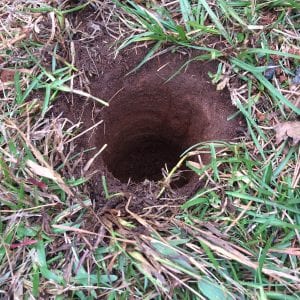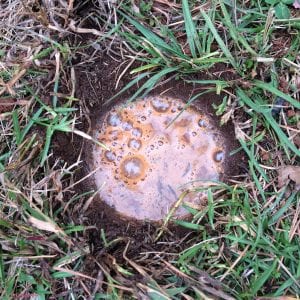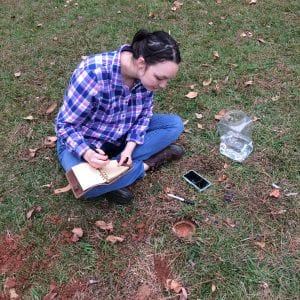Fish & Water

To ensure that the site you have selected will work for a rain garden, perform an infiltration test. Spring is a great time for this, as the soil should not be frozen and the groundwater table should be high.
- Dig a 1-foot-deep test hole in the area where the rain garden will be built.
- Fill the hole with water just below the rim. Record the exact time you stop filling the hole and the time it takes to drain completely. Add water to the rim and record the drainage time twice more. The third test will give the best measure of how your soil will perform when fully saturated.
- Divide the distance that the water drains by the amount of time it takes to drain.
For example, if the water drops 6 inches in 12 hours, then divide 6 by 12 for an infiltration rate of 1/2 inch per hour. If the slowest infiltration rate measured of the three trials is less than 1/2 inch per hour, then dig another 3 to 6 inches deeper and repeat the above steps. Repeat this process at various depths down to 2 feet or until you have at least 1/2 inch per hour infiltration.
To save time, monitor how much water infiltrates in 10 minutes. If the water drops 1 inch in 10 minutes, divide 1 by 10 to get the inches per minute then multiply that by 60 to get inches per hour: 1 × 60 = 6 inches/hour
- Figures 16. Digging a hole 1 foot deep to conduct an infiltration test.
- Figures 17. Filling the hole with water to determine infiltration rate.
- Figures 18. Measuring the amount of time it takes water to drain.
 This is an excerpt from How to Install a Rain Garden, ANR-2768.
This is an excerpt from How to Install a Rain Garden, ANR-2768.
Laura Bell, Project Coordinator; Eve Brantley, Water Resources Specialist and Professor; Caitlin Sweeney, Assistant Coordinator; and Naomi Pitts, Assistant Coordinator, all with Alabama Extension Water Program at Auburn University




